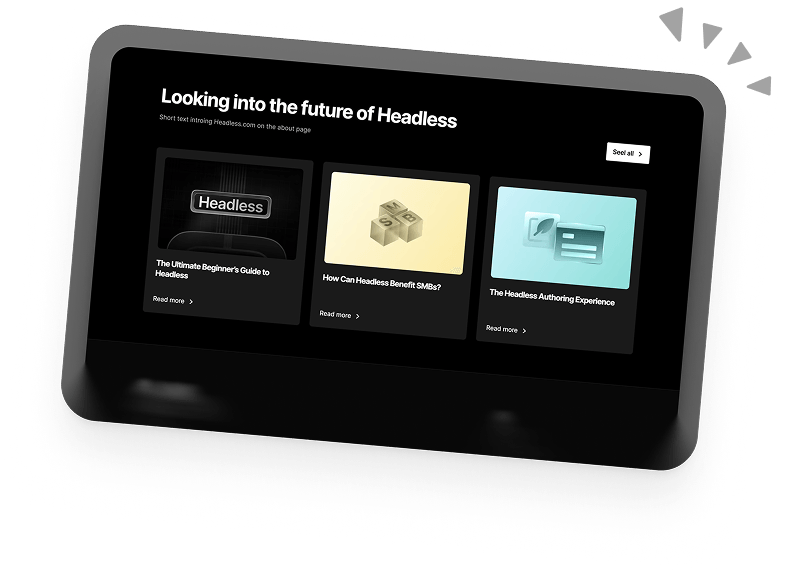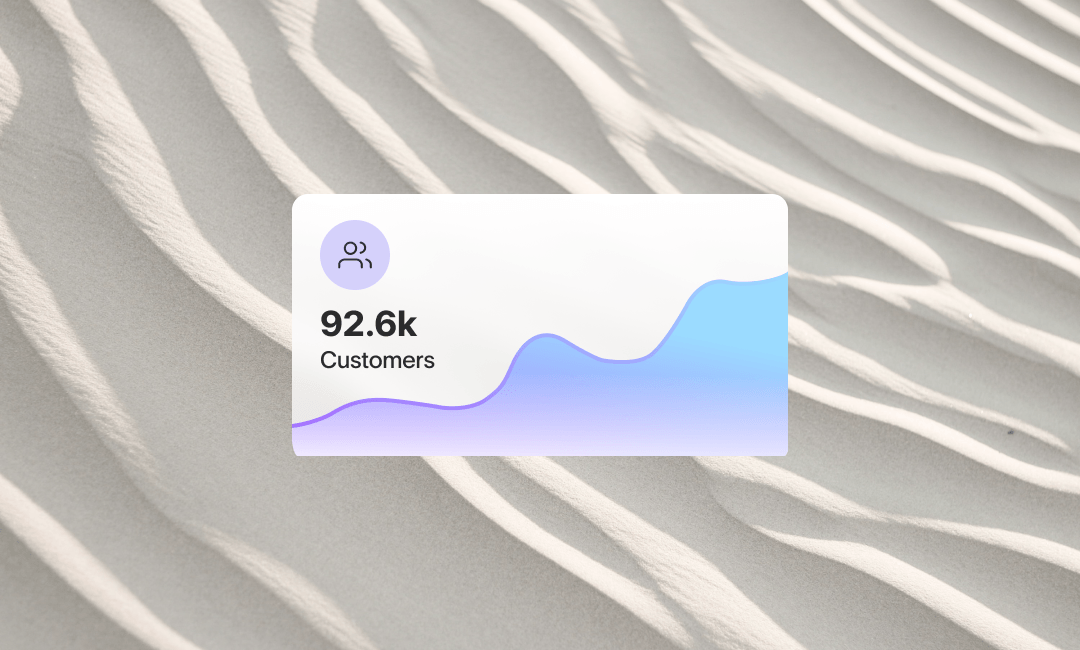How A Headless CMS Enables Omnichannel Marketing
People are more connected than ever before. At any given moment you can instantly connect with anyone in the world through hundreds of different channels.
You can comment on posts by celebrities and world leaders. You can shop online through voice commands. You can video chat from your smartwatch. You can even make a boring old phone call.
So, naturally, people have come to expect similarly easy omnichannel interactions with their favourite brands.
Everyone has their preferred channels for different interactions with a brand (aka touchpoints). For example, people over 45 prefer contacting customer service on the phone, whereas younger people prefer text chats. Because of the number of touchpoints available, users can now engage with brands in an individualised, non-linear fashion.
A multi-channel interaction might go something like this:
- Find a brand’s social media page
- Search for the brand on google
- Comment a question about a product on social media
- Visit the brand’s website
- Watch videos and read content about the brand and their products
- Ask further questions via customer service live chat
- Make purchase
- Sign up for email newsletters
The need for scaling
According to Gartner, two-thirds of marketers say that their companies are competing primarily on the basis of customer experiences.
Currently, over half of companies use at least eight channels to interact with their customers, and over 70% of customers use multiple touchpoints along their user journey.
It’s clear that experiences have become the new currency of digital business, and Customer Experience (CX) is no longer an option but a strategic imperative.
With the rapidly evolving needs of the digital market, companies need to expand the ways they interact with their audience. To do this, they must be able to scale and deploy content quickly across channels.
How do we successfully scale customer experiences?
Bigger isn’t always better. In the wise words of Master Yoda: “size matters not.”
So, when we talk about scaling customer experience, we’re not just talking about adding as many channels as possible.
With the explosion of digital channels available to the average user, their journeys have become increasingly non-linear. People can navigate your sales funnel at will.
Adapting to this type of omnichannel customer experience requires synergy and consistency.
All the touchpoints a user has with a brand should feel like part of one overarching experience, and every channel needs to work with the others to achieve this. Think of it like an orchestra: every instrument is playing in harmony to provide a grandiose musical experience.
Scalability
The trick to scaling is not just about the scaling itself. It’s also about the scalability of your omnichannel experiences.
Your omnichannel infrastructure needs scalability built into it to match the expansion of users’ needs and the expansion of your business.
To scale your customer experience and have scalable experiences, you need to consider these features:
- Content flexibility – how quickly can you adapt to new trends and customer expectations? And how quickly can you create new experiences?
- Control – how easily can you manage channels, platforms, and microservices?
- Capacity – how easily can you update your infrastructure to power these channels?
- Consistency – are you providing a consistent user experience while doing all the above?
CMS Architecture and Scaling
Until recently, the bulk of digital commerce relied on Monolithic architecture to power their websites. These content management systems gave site owners control over the back-end admin and the front-end user experience in one place.
But with increased demands on digital businesses, monolithic systems became cumbersome and difficult to scale.
If you are looking to build experiences that support both current and future business needs, then you need a platform that empowers you to design, build, and iterate digital experiences. This is where Headless comes in. Headless CMS Architecture provides the flexible and dynamic content management that today’s digital businesses need.
What does Headless mean?
Headless architecture is essentially a back-end without a defined front-end.
One central content hub manages and posts to a range of different presentation layers, allowing you to send content from the same back-end to multiple sites, apps, and marketing channels.
Scaling Omnichannel Experiences with Headless
Centralising content
One of Headless’ most practical features is the single source of truth it provides for omnichannel experiences.
Having a centralised content hub for your brand means you can easily control what gets posted to each channel and repurpose content for different platforms. Editing also becomes seamless with Headless as changes to content will be reflected everywhere that content is located.
Adaptability
According to the Harvard Business Review, B2B buyers have doubled the number of channels they use, going from using five channels in 2016 to using ten or more in 2021.
The field of omnichannel CX is expanding rapidly, both for businesses and customers. To compete with this, you need to be able to grow your customer experiences just as fast.
Through its decoupled architecture, Headless makes it easier than ever to expand your arsenal of digital touchpoints. You can integrate as many “heads” as you need and quickly repurpose your existing content to fit your new channels.
Future-proofing
One of the things that makes the Headless CMS so popular among enterprise businesses is the ability to change front and back-ends independently of each other. Effectively, you can replace any front-end you’re using with minimal disruption.
With the pace of modern technological developments, software is becoming outdated faster than ever. But with Headless, you’re not dependent on a particular framework, meaning you can adapt and scale with the development of new technologies, making you effectively “future-proof”.
In Ancient Greek Philosophy, there is a thought experiment known as the Ship of Theseus where the planks of a ship are replaced over time until no planks remain from the original construction, posing the question of whether or not it’s still the same ship.
Philosophical ramifications aside, this is a good illustration of how a Headless CMS gives you the agility and scalability to avoid being outpaced by technology.
Omnichannel experiences are simpler with Headless
User journeys are more flexible than ever. The abundance of digital touchpoints gives customers a range of opportunities and new ways to interact with brands. Businesses can stand out by adapting to how people use these digital mediums.
With a Headless CMS, you can readily adopt this omnichannel approach while maintaining consistency across all platforms. As digital marketing and e-commerce become more about being “everything-everywhere-all-at-once”, the flexibility and adaptability of Headless will help businesses embrace these changes.
Book a 30-min Introduction Call
Let's jump on a quick intro call We'll break down your project, and pinpoint exactly how we can help.



Our clients  Holaa! love working with us see their stories below!
Holaa! love working with us see their stories below!






